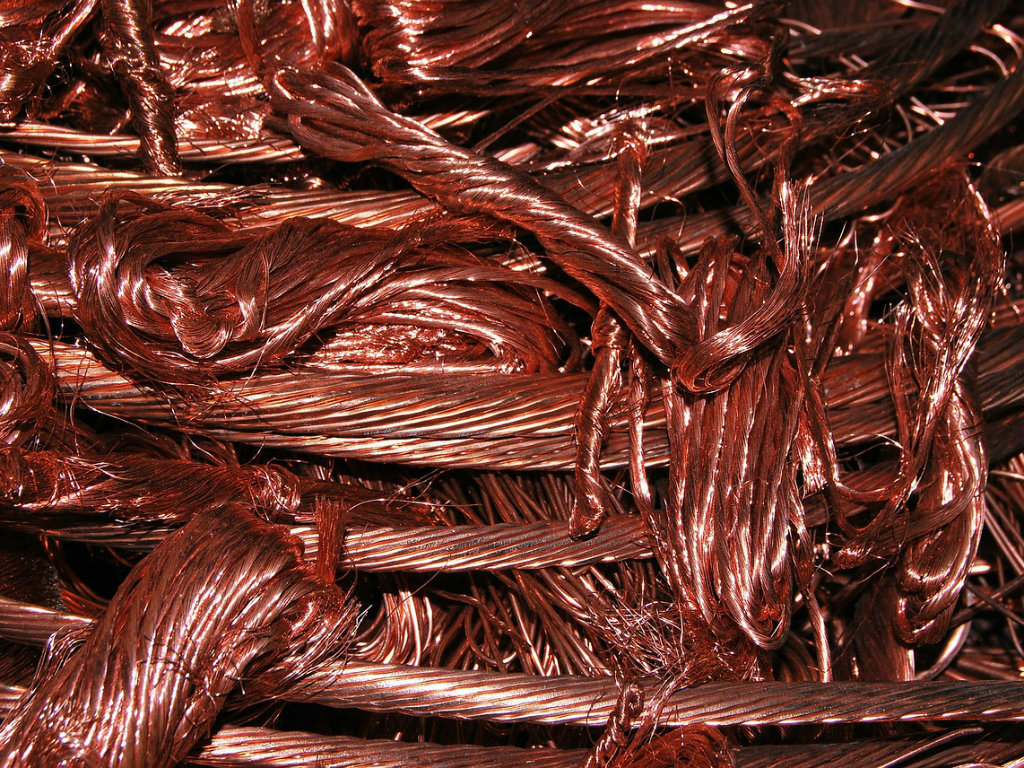Source:
RTS |
Tuesday,
01.02.2022.|
15:38
Export of Industrial Metals a Promising Industry – Copper, Nickel, Cobalt and Lithium to Reach Record Values
The global metal industry is among the industries that have been recording the biggest growth in the past two years during which the world has struggled with the pandemic. Due to the large demand, last year alone, the prices of some metals rose up to 80%, and the projections indicate that copper, nickel, cobalt and lithium will reach record values in the next few years.
The assistant analytics director at the Chamber of Commerce of Serbia (CCIS), Bojan Stanic, says for RTS that the economy of Serbia is small and that the export of industrial metals is not significant on a global scale, but that it is in the European market. He points out that this is a promising industry.
Bojan Stanic says that the situation in the market of basic industrial metals is such that the prices are high, which is a consequence of the nearly record growth in 2021.
– When we look at the copper market, we nevertheless see that a certain cooling down is taking place, the price has started to drop and since the beginning of the year it has dropped around 2%. At the London exchange, it is currently at around USD 9,500 per metric ton – Stanic says.
He also points out that there are indications of the stabilization of the prices when it comes to steel, especially in the USA.
– Although the supply is growing there, the question is what happens with the supply in China, since there are indications that the production will be reduced during the Olympics – Stanic says.
When it comes to lithium, Stanic says that a record growth was seen last year – the price at the Chinese market grew nearly five times.
– We can say that there’s a great demand for lithium, so the price is expected to continue growing this year as well – Stanic predicts.
He says that the oil has reached its seven-year peak, primarily due to geopolitical reasons.
“The example of copper shows that the demand is growing”
At the end of last year, the exporting quotas between the USA and the EU were removed, and Bojan Stanic says that this has primarily influenced the relations of the USA and the EU and that it is a step forward to the thawing of the relations after the political changes in Washington.
– The quotas for the import of steel from third countries to the EU, which includes Serbia, still remain. It is understandable that they are protecting the domestic industry, but it should be kept in mind that Serbia has a signed Free Trade Agreement with the EU and that it is a candidate country – Stanic reminds.
He says that the example of copper shows that the demand is growing, especially from South America, so the supply and demand when it comes to copper are expected to reach a balance this year, whereas there would even be a surplus in 2023.
– It’s a little different with steel, but it’s especially important to point out that it also depends on other factors, primarily on what happens in the market of China, which is the main producer and consumer – Stanic explains.
Gold also saw record prices last year, and Stanic says that, after a fall, it is now stagnating at around USD 800 per ounce.
– What’s important is that the psychological limit of 2,000 was pushed, following which there was a drop. Gold is the measure of value and, when there’s a crisis situation, the price grows. When there’s a recovery and more favorable conditions for investments, it drops. The current market does not know what will happened with the recovery during 2022 – Stanic points out.
“Green transition is necessary”
That there’s a great demand for metals is also shown by the fact that the Smederevo steel mill and the Bor mine are the leading Serbian exporters.
Bojan Stanic says that the economy of Serbia is relatively small and that the export of industrial metals is not significant on a global scale, but that it is in the European market.
– There have been new expansions of the areas for the exploitation of copper in the Bor area and the export of Serbia in Europe is expected to be second only to Poland. That is a promising industry in Serbia – Stanic emphasizes.
Analyses show that the energy transition will cost the world more than USD 170 trillion in the next three decades. Stanic points out that green transition is necessary and that we should join it as soon as possible.
– On the other hand, it should be reasonable and gradual, so as to not jeopardize the economic system. It is especially important for there to be additional understanding toward developing countries and emerging markets, such as Serbia – Stanic says.
The assistant analytics director at the Chamber of Commerce of Serbia (CCIS), Bojan Stanic, says for RTS that the economy of Serbia is small and that the export of industrial metals is not significant on a global scale, but that it is in the European market. He points out that this is a promising industry.
Bojan Stanic says that the situation in the market of basic industrial metals is such that the prices are high, which is a consequence of the nearly record growth in 2021.
– When we look at the copper market, we nevertheless see that a certain cooling down is taking place, the price has started to drop and since the beginning of the year it has dropped around 2%. At the London exchange, it is currently at around USD 9,500 per metric ton – Stanic says.
He also points out that there are indications of the stabilization of the prices when it comes to steel, especially in the USA.
– Although the supply is growing there, the question is what happens with the supply in China, since there are indications that the production will be reduced during the Olympics – Stanic says.
When it comes to lithium, Stanic says that a record growth was seen last year – the price at the Chinese market grew nearly five times.
– We can say that there’s a great demand for lithium, so the price is expected to continue growing this year as well – Stanic predicts.
He says that the oil has reached its seven-year peak, primarily due to geopolitical reasons.
“The example of copper shows that the demand is growing”
At the end of last year, the exporting quotas between the USA and the EU were removed, and Bojan Stanic says that this has primarily influenced the relations of the USA and the EU and that it is a step forward to the thawing of the relations after the political changes in Washington.
– The quotas for the import of steel from third countries to the EU, which includes Serbia, still remain. It is understandable that they are protecting the domestic industry, but it should be kept in mind that Serbia has a signed Free Trade Agreement with the EU and that it is a candidate country – Stanic reminds.
He says that the example of copper shows that the demand is growing, especially from South America, so the supply and demand when it comes to copper are expected to reach a balance this year, whereas there would even be a surplus in 2023.
– It’s a little different with steel, but it’s especially important to point out that it also depends on other factors, primarily on what happens in the market of China, which is the main producer and consumer – Stanic explains.
Gold also saw record prices last year, and Stanic says that, after a fall, it is now stagnating at around USD 800 per ounce.
– What’s important is that the psychological limit of 2,000 was pushed, following which there was a drop. Gold is the measure of value and, when there’s a crisis situation, the price grows. When there’s a recovery and more favorable conditions for investments, it drops. The current market does not know what will happened with the recovery during 2022 – Stanic points out.
“Green transition is necessary”
That there’s a great demand for metals is also shown by the fact that the Smederevo steel mill and the Bor mine are the leading Serbian exporters.
Bojan Stanic says that the economy of Serbia is relatively small and that the export of industrial metals is not significant on a global scale, but that it is in the European market.
– There have been new expansions of the areas for the exploitation of copper in the Bor area and the export of Serbia in Europe is expected to be second only to Poland. That is a promising industry in Serbia – Stanic emphasizes.
Analyses show that the energy transition will cost the world more than USD 170 trillion in the next three decades. Stanic points out that green transition is necessary and that we should join it as soon as possible.
– On the other hand, it should be reasonable and gradual, so as to not jeopardize the economic system. It is especially important for there to be additional understanding toward developing countries and emerging markets, such as Serbia – Stanic says.
Only logged-in users can comment.


 Izdanje Srbija
Izdanje Srbija Serbische Ausgabe
Serbische Ausgabe Izdanje BiH
Izdanje BiH Izdanje Crna Gora
Izdanje Crna Gora


 News
News














 LinkedIn
LinkedIn Email
Email Copy link
Copy link


